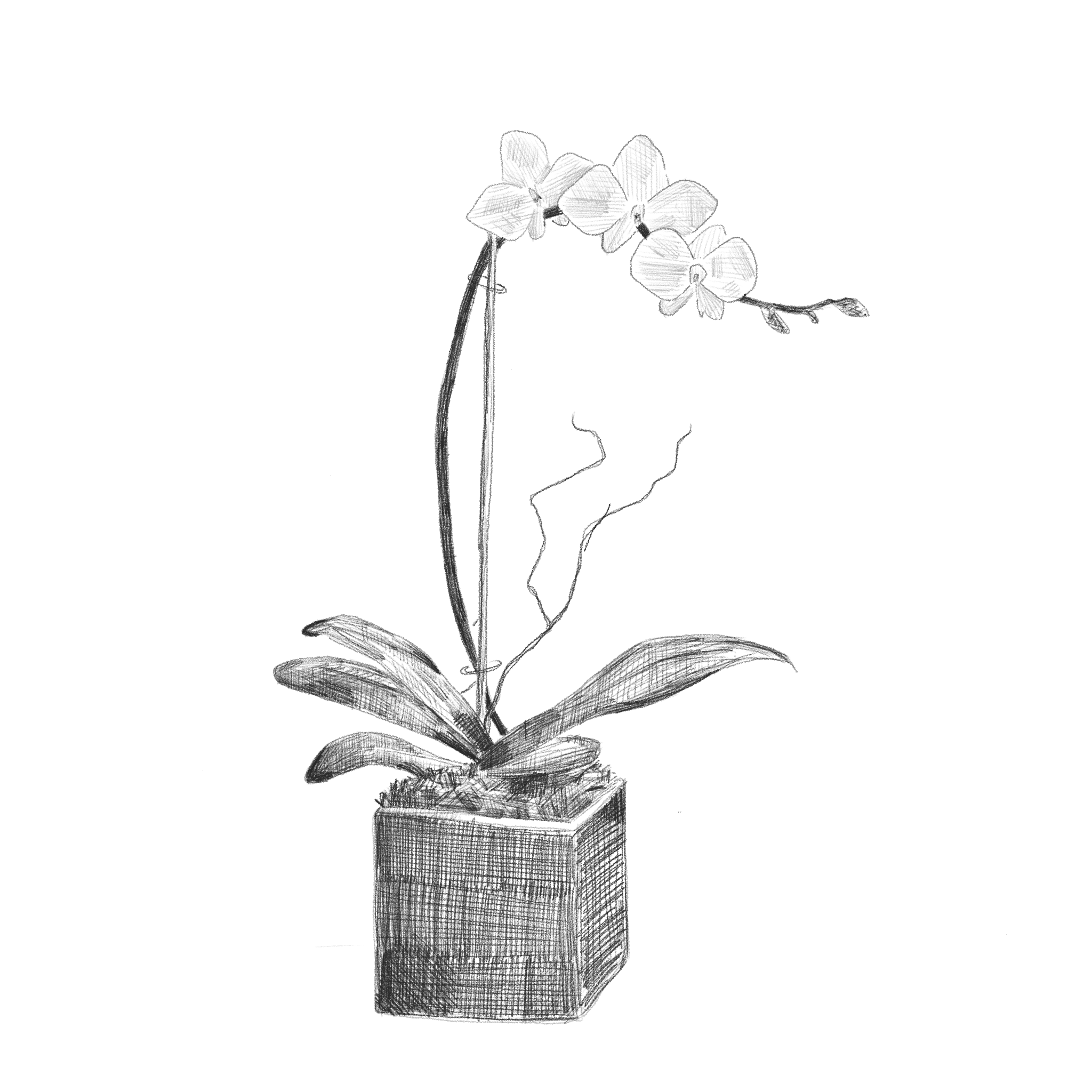
Jacinda Webber, Staff Illustrator
I’ve heard that an orchid isn’t the ideal flower for a bedroom. Apparently, it’s the kind you’d find at dental offices, austere and clinical. But orchids aren’t only for dental office displays. They are living evidence that what matters is not a plant itself but my act of choosing it. Orchids have taught me to give something a purpose, however fragile, rather than drifting through spaces and decisions without one.
On Saturday, I moved into Benjamin Franklin College for the second time. I had almost decided on an orchid I’d buy for my single room, but the stigma against the showy hothouse plants lingered. Sure enough, when I got my yearly checkup at the dentist before flying back to school, I was greeted by an orchid on either side of the glass door separating the waiting room from the office.
I slowly accepted that it might be true. After finding an article on Orchidbliss.com titled “HOW TO CARE FOR ORCHIDS IN AN OFFICE: THE ULTIMATE GUIDE,” and a Facebook post from “Oglethorpe Orchids” of an elaborate arrangement right before delivery to a dentist’s office in Savannah, I caved.
The half of me that found itself unabashedly defending a plant I had little obvious connection to succumbed to a fatal punch from the other half, which ridiculed the innocent plants to the point of wilting their blooms. The better-natured half of me overwatered the orchid. Then, it died.
Orchids never console the anxieties of a dental chair or the enraging but typically mild discomfort of having the dentist poke your gums with a metal dental probe. The pain isn’t as bad as stubbing your toe, but that anger you feel toward a poorly placed coffee table is surely rivaled by the indignation you feel toward a dentist and her hygienist. Almost all of my murderous impulses are toward the people who clean my teeth.
Orchids, in that case, do their job very poorly. But I think their job is done poorly because they do not have one. When decorating an office, a new dentist picks an orchid not because of anything inherent to the plant, but because it’s what dentist offices have.
Two years ago, I was a high schooler when I interviewed to be a program counselor at the School of the New York Times. It towers over Lincoln Center. To the north, there is an unobstructed view of the Upper West Side’s expanse. To the south, the rest of Manhattan. Having been a student there the summer before, I knew those views well. When I received the email that contained my offer letter and drafted contract, I signed immediately. I wanted to wake up every day and marvel at the architecture all around the island. Hearst Tower, Deutsche Bank Center, the Empire State Building. Architecture is something I love. Seeing it firsthand — after spending my whole life living in a small town in Kentucky — was like getting to visit the Louvre Museum after hours.
When I first moved in, the room was bare. The stark white walls were only good for reflecting light. I needed something that would make it less sterile. I wanted something that would complement the travertine arches of the Metropolitan Opera House. I wanted a white plant that wouldn’t distract from arguably my favorite piece of architecture in the world.
I hurried to Columbus Circle, pulled through the glass doors of the Deutsche Bank Center, down its escalator to the basement and saw them. Orchids occupied a huge table at the Whole Foods. Dozens of them. Its white petals and white pot wouldn’t distract from those arches, some 16 stories downstairs from my room.
My orchid had a purpose.
Later that summer, I relocated to a building on Lexington Avenue. It was across the street from the subway grate Marilyn Monroe was photographed over — her breezy white dress blowing upward. My new room was less iconic than that memorable Hollywood scene. It hardly had a window that peered into vacant offices on East 51st Street, where the WeWork cast a gloomy shadow into my room. It was what I’d call a shithole. The physical act of moving into said shithole wasn’t much more glamorous. I stuffed all my clothes into my carry-on suitcase, stacked my backpack on top of it, picked up my orchid and left all of my other belongings behind out of frustration.
The orchid itself was not very beautiful. It had been either 15 or 20 dollars, and it still had the price sticker on its back. I actually appreciated the mass-manufactured pot as much as the plant that lived in it. It was “why” I bought it, and “why” I kept it that mattered so much.
I don’t know anything about plants. Or about flowers. “What” kind of them I buy or own is less certain than a coin toss. But there was a story there. It was about decision and intentionality — the not-fully-explained impulse to leave behind more valuable and useful possessions to keep something that could die if given too much water or left in the kind of darkness I’d now live under in Midtown East.
Even though the new place didn’t have those same walls, I kept the orchid. Its purpose had changed. But it still had one.







